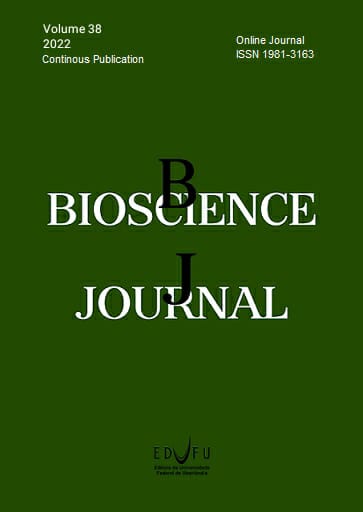Agronomic performance of salad tomatoes grown in different conduction systems and fertilization doses
DOI:
https://doi.org/10.14393/BJ-v38n0a2022-54148Keywords:
Field management, Productivity, Solanum lycopersicum.Abstract
Looking to reduce the cost and maximize tomato productivity, this study aimed to evaluate fertilizer doses and conduction systems. For this, a field experiment was carried out in randomized blocks, in a simple factorial scheme, which consists in four fertilizer doses, (50, 100, 150 and 200% dose), and four conduction systems (with one or two plants per pit, and one or two stems per plant). Plants were spaced 0.44m and 1.5m between lines. Each plot consisted of 10 plants. The evaluated characteristics were fruit mass, number of fruits, total production per plant and pit, longitudinal and transversal dimension of the fruit. Under the experiment conditions, interactions were observed between fertilization and conduction only for the transversal and longitudinal diameter. The C4 conduction system showed superior results for the estimated yield when compared to the treatments containing only one plant per pit (C1 and C2). For the fertilizer doses, the observed yield was 142.68 t ha -1, in the 150% dose, and 114.84 t ha -1 for the 50% dose. The highest production per pit was obtained in the 150% fertilizer dose and the C4 conduction, but this treatment showed a lower average fruit mass. The treatment with two plants per pit and two stems provided lower fruit average mass than the treatments containing a single plant. The fertilization influenced only in the longitudinal diameter, and the largest diameter was observed in the recommended fertilization dose. Aiming at cost/efficiency relation, the 100% dose and the C3 were considered the best treatments.
Downloads
Downloads
Published
How to Cite
Issue
Section
License
Copyright (c) 2022 Antônio Alves de Oliveira Júnior, Gabriel Filipe da Silva, Michelle Souza Vilela, José Ricardo Peixoto, Jean Kleber de Abreu Mattos, João Victor Ávila, Andrine De Mari Cenci, Carlos Oliveira Castro

This work is licensed under a Creative Commons Attribution 4.0 International License.





